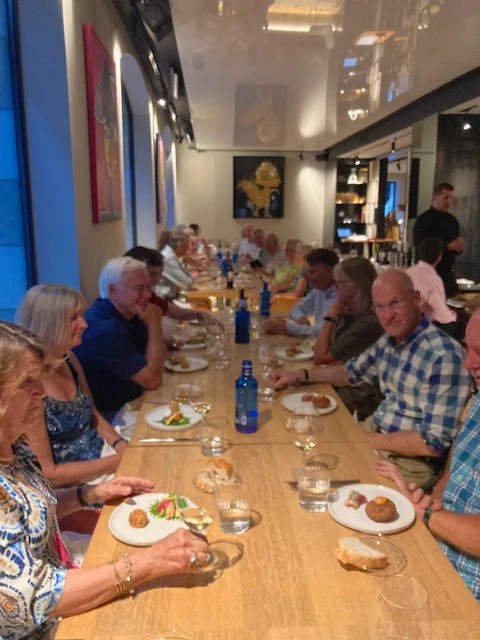Our final day was taken up with a visit to Toro and our final dinner. Just one visit? Well, it was quite a visit.
Bodegas Piedra is the creation of a Scottish lawyer who fell in love with the Toro region when he fell off his bike on the Compostella de Santiago route back in the 1990s. Toro is to the west of Rueda, on the Duero river, but is hotter and drier than the other regions we visited, with a reputation for gutsy high alcohol wines. Toro winemakers are determined to improve the quality and reputation of their wines, and Gonzalo Sanz, Piedra’s General Manager, is at the forefront of this transformation.
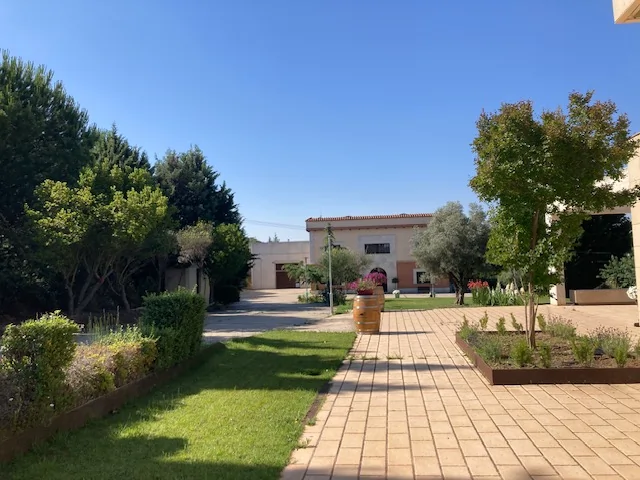
Gonzalo, who Tim met for the first time during his visits last year, is a marvel! He gave us the most wonderful experience, explaining what was happening in the Bocarrage vineyard beside the winery, comparing the leaves and growth of Tinta del Toro (the genome of Tempranillo grown in the region) and Garnacha. The vines were spaced much more widely than those of Ribera, reflecting the poorer soils and lack of water.
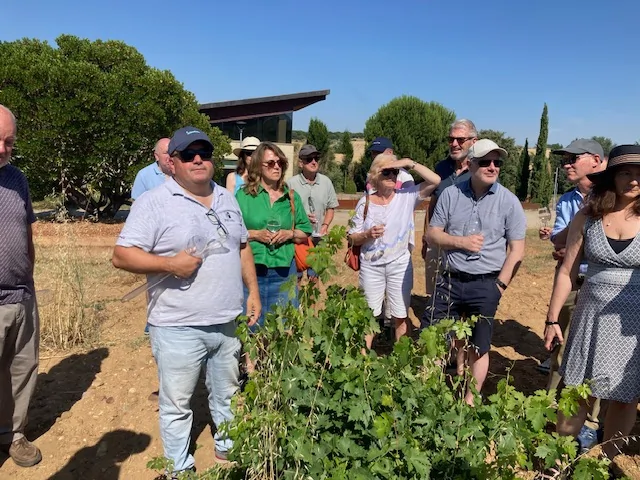
Piedra are organic and Gonzalo talked about the copper and sulphur dressings they make, according to need, each year to treat oidium, the wild herbs that grow among the vines encouraging beneficial insects, the mulches they apply and tilling of the soil. Of their 205ha of vines, 185 are older than 40 years, with some nearly 100 years old. They have divided their vineyards into 29 parcels, on different types of soils, none more than 10 minutes by tractor from the winery.
Grape ripeness is monitored closely in September and when skins have optimum colour and pips are no longer green they harvest, in small batches, and winemaking commences.
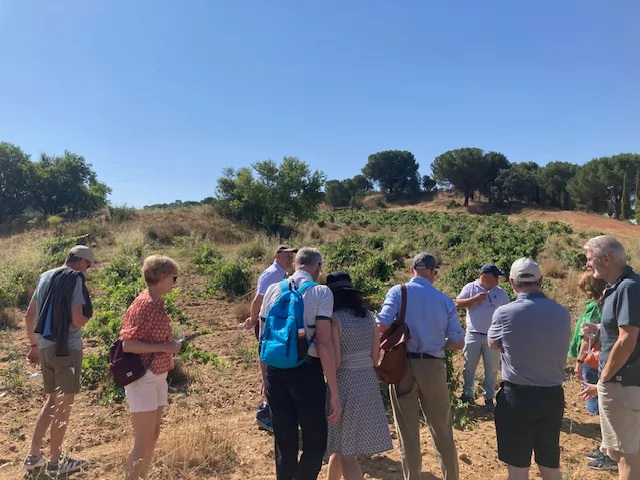
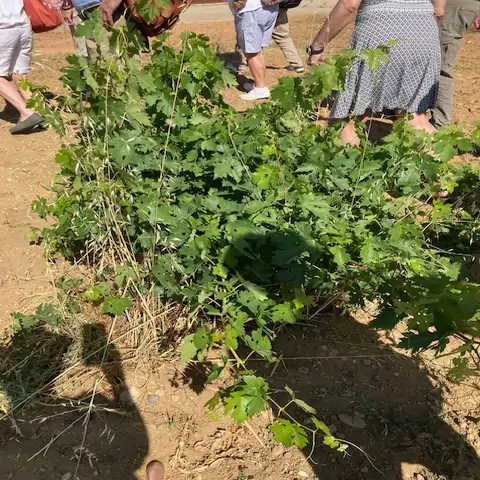
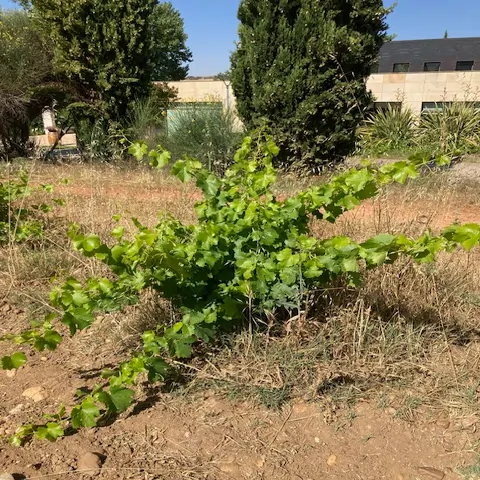
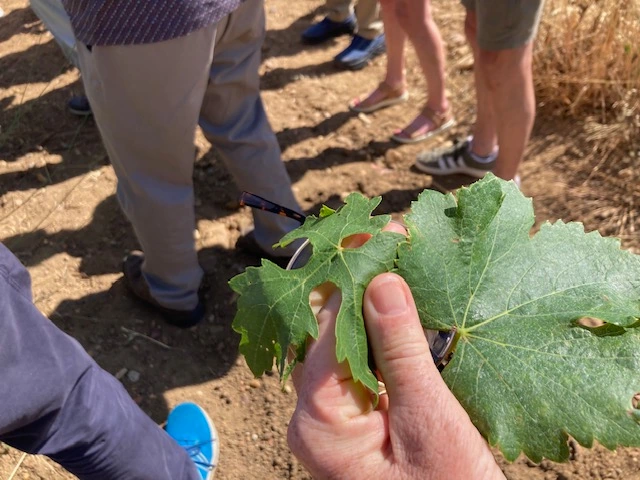
In the winery Gonzalo explained how they intervene as little as possible with the grapes. Natural yeasts create the fermentation, and musts settle gently before juice or wine is drained off. To help us to understand the effects of different components of his wines Gonzalo led us through a masterclass of tasting from tank and barrel, starting with an Albillo that was resting on its lees and would be blended with wine in barrel.
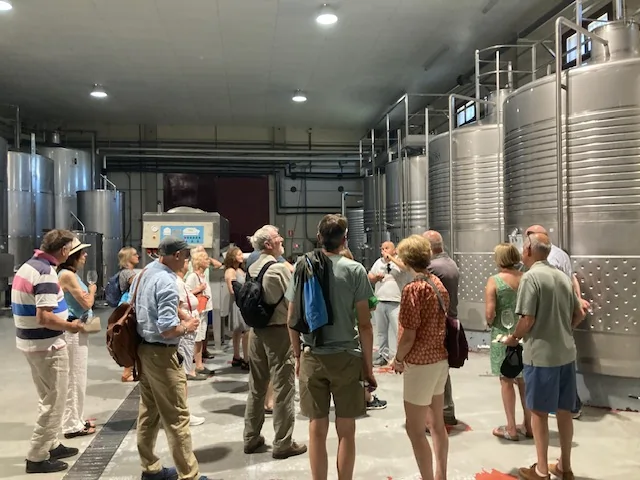
Also from tank we contrasted Garnacha and Tinto del Toro from the 2024 vintage, and tried a Crianza blend from the 2022 vintage that was ready to be bottled, so we could identify the effect of oak.
In the barrel cellar we explored ageing, different types of oak, barrel size and the impact of time spent in barrel. Each wine we tasted gave us a new insight not only into the technicalities of winemaking but also the artistry as Gonzalo discussed how he would decide how much more time a wine would spend in oak or tank or bottle before release.
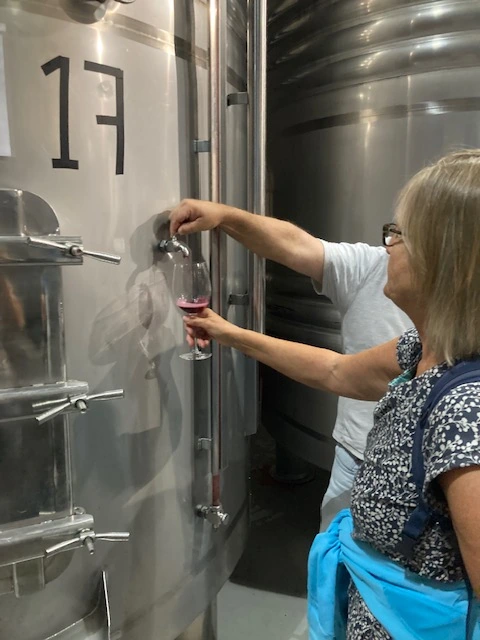
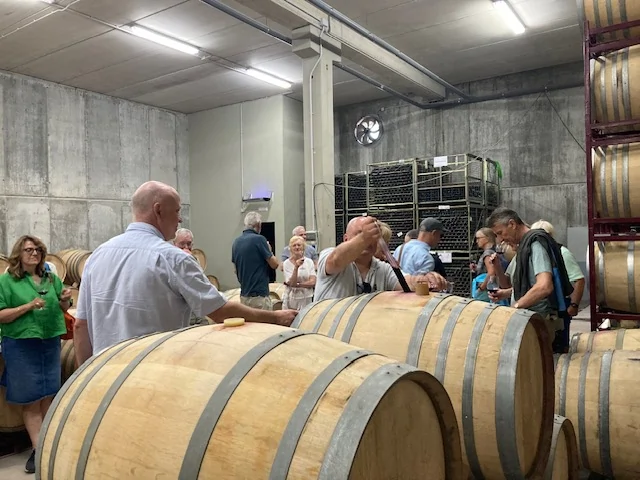
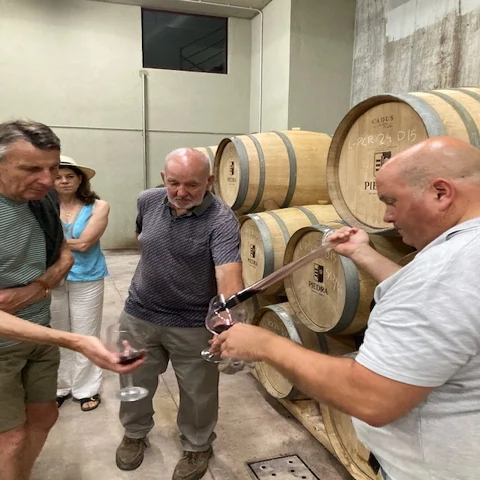
All the wines we tasted were elegant and fresh, and while some would need some more time for tannins to soften fully they were far from the ‘old view’ of Toro wines. We returned to the restaurant for a delicious lunch accompanied by a Rueda Verdejo (made from Gonzalo’s grapes – he is a cousin of the Sanz family who own Menade), the Piedra Prohibida (so called because it is 100% Garnacha, which was only permitted in the Toro DO very recently), their Reserva and finally a beautiful sweet wine made from Tinta del Toro grapes harvested at 18% potential alcohol!
The passion and dedication we experienced with Gonzalo was truly inspiring, we departed converts to the wines of Toro, though I’m not sure anyone managed to stay awake on the coach back to Valladolid.
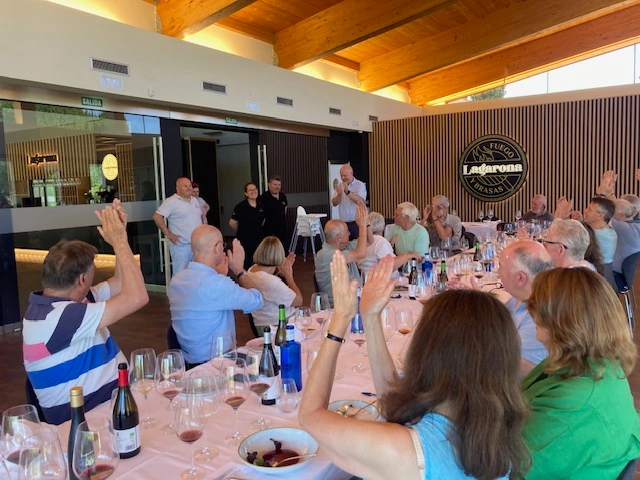
Amazingly we had enough energy (and room!) for a final dinner, a series of very creative tapas at the Trasto restaurant close to our hotel. It was a hot evening but we managed the multiple courses, Rueda white and Ribera del Duero red with gusto. And exchanged stories, contact details and hopes to meet on future tours.
Once again Castilla y León and its wonderful people have given Tim Syrad Wine Tours an experience to remember. And a list of wines to drink more of.
Slovenia here we come…
